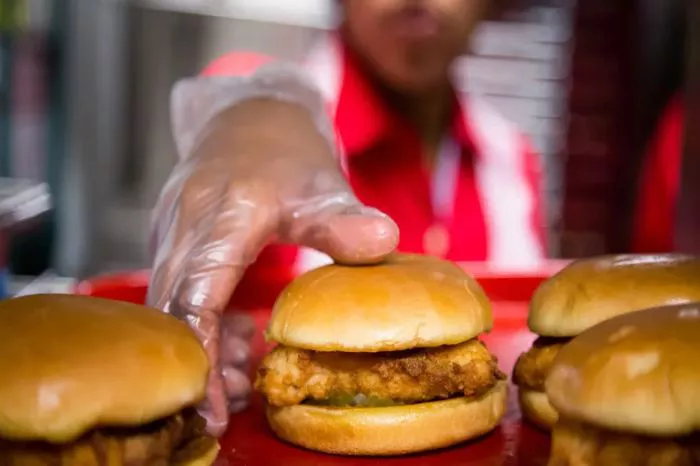Distinguishing Between Junk Food and Fast Food
In the realm of convenience eating, two terms often intermingle but carry distinct connotations: junk food and fast food. While both categories offer quick, accessible options for on-the-go consumption, there are fundamental differences in their nutritional profiles, culinary origins, and societal perceptions. In this exploration, we delve into the nuances that separate junk food from fast food, shedding light on their respective roles in modern diets and lifestyles.
Defining Junk Food
Junk food is typically characterized by its high levels of calories, sugar, salt, and unhealthy fats, coupled with minimal nutritional value. These products often undergo extensive processing and contain artificial additives, preservatives, and flavor enhancers to enhance taste and shelf life. Common examples of junk food include candy, soda, potato chips, sugary cereals, and processed snacks like cookies and crackers. While indulging in junk food occasionally can be part of a balanced diet, excessive consumption can contribute to weight gain, obesity, and various chronic health conditions such as heart disease, diabetes, and hypertension.
Key Characteristics of Junk Food:
High in calories, sugar, salt, and unhealthy fats.
Minimal nutritional value and often devoid of essential vitamins, minerals, and fiber.
Extensively processed and laden with artificial additives, preservatives, and flavorings.
Typically packaged in convenient single-serving portions for easy snacking.
Associated with negative health outcomes when consumed in excess, including obesity, diabetes, and cardiovascular disease.
Defining Fast Food
Fast food, on the other hand, refers to prepared meals and snacks that are mass-produced, quickly served, and intended for immediate consumption. While fast food is often associated with convenience and affordability, its nutritional quality can vary widely depending on the ingredients and preparation methods used. Common examples of fast food include burgers, fries, pizza, fried chicken, tacos, and sandwiches, typically served at chain restaurants or drive-thru establishments. While some fast food items may be high in calories, sugar, and fat, others offer healthier options such as grilled chicken, salads, and wraps, providing consumers with a range of choices to fit their dietary preferences and nutritional needs.
Key Characteristics of Fast Food:
Prepared meals and snacks served quickly and conveniently, often through drive-thru or counter service.
Varied nutritional profiles, ranging from indulgent items high in calories, fat, and sodium to healthier options featuring lean proteins, vegetables, and whole grains.
Offered by chain restaurants and franchises with standardized menus and recipes.
Popularized for their affordability, accessibility, and consistent quality.
Perceived as a convenient dining option for busy individuals and families, catering to a wide range of tastes and preferences.
Distinguishing Factors Between Junk Food and Fast Food
While junk food and fast food share some commonalities, such as convenience and accessibility, several factors distinguish them from one another:
Nutritional Value: Perhaps the most significant difference between junk food and fast food lies in their nutritional content. While fast food may offer some degree of nutritional value, such as protein, fiber, and essential nutrients, junk food tends to be high in empty calories and lacking in vitamins, minerals, and dietary fiber. Fast food restaurants increasingly offer healthier menu options, including salads, grilled proteins, and whole grain sides, in response to consumer demand for healthier eating choices.
Processing and Ingredients: Junk food is often highly processed and contains artificial additives, flavorings, and preservatives to enhance taste, texture, and shelf life. Fast food, while also processed to some extent, typically relies on more familiar ingredients like meat, poultry, grains, and produce. However, fast food items can still be high in sodium, saturated fat, and refined carbohydrates, particularly in fried and heavily sauced dishes.
Consumer Perception: There is a perception among consumers that fast food may be more acceptable or less stigmatized than junk food, particularly when it comes to occasional indulgence or convenience dining. Fast food restaurants often offer a wider range of menu options, catering to diverse tastes and dietary preferences, which may contribute to their more favorable image compared to junk food products associated with excessive sugar, salt, and fat consumption.
Regulation and Marketing: Both junk food and fast food are subject to regulatory oversight and public health campaigns aimed at promoting healthier eating habits and combating obesity-related diseases. However, fast food chains have faced greater scrutiny in recent years regarding their marketing practices, especially when targeting children and adolescents through advertising, promotions, and toy incentives. In response, many fast food restaurants have introduced healthier menu options and transparent nutritional labeling to empower consumers to make more informed choices.
Cultural and Social Impact: Fast food and junk food have become deeply ingrained in modern food culture, shaping dietary habits, social norms, and lifestyle preferences. While fast food may be perceived as a convenient dining option for busy individuals and families, junk food is often associated with snacking, indulgence, and impulse eating. Both play a role in shaping consumer behavior and attitudes toward food, influencing purchasing decisions and food preferences across generations.
Conclusion
In summary, while junk food and fast food share similarities in their convenience and accessibility, they differ significantly in their nutritional content, processing methods, and societal perceptions. Junk food is characterized by its high levels of calories, sugar, salt, and unhealthy fats, often lacking in essential nutrients and contributing to adverse health outcomes when consumed in excess. Fast food, on the other hand, encompasses a broader range of prepared meals and snacks, offering both indulgent and healthier options to cater to diverse tastes and dietary preferences. By understanding the distinctions between junk food and fast food, consumers can make more informed choices about their dietary habits, striving for balance, moderation, and overall well-being in their food consumption habits.

